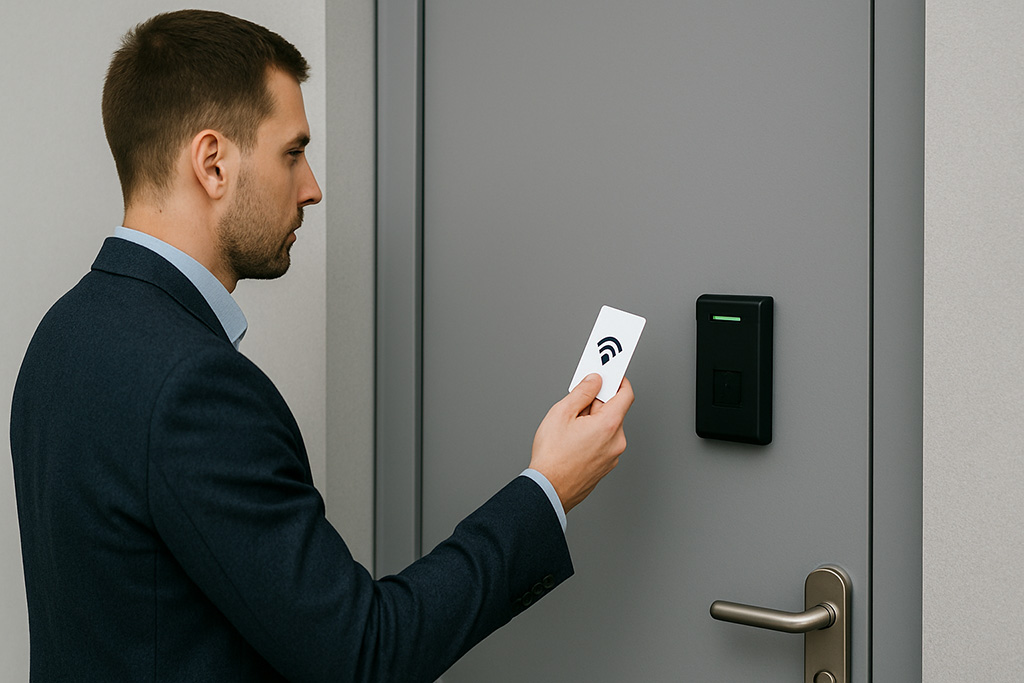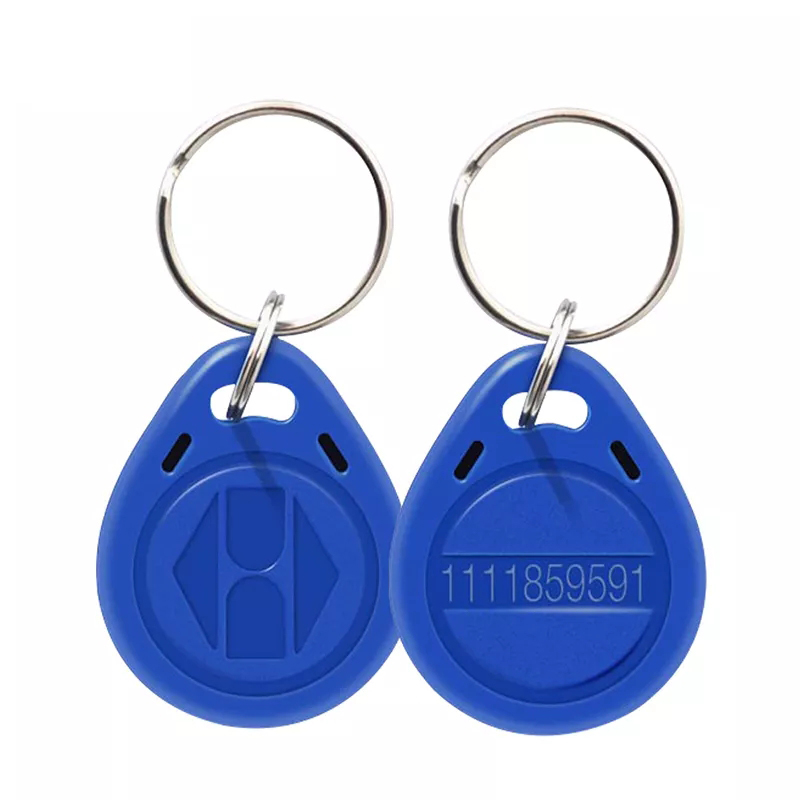
In an era where digital interactions increasingly define both personal and professional activities, identity recognition and access control systems are evolving beyond simple verification tools. They are becoming the backbone of modern security frameworks across enterprises, governments, and consumer ecosystems. With the rise of mobile-first lifestyles, the Internet of Things (IoT), and artificial intelligence (AI), technologies such as unique identifiers (UIDs), smart Card standards, RFID, and NFC are taking center stage. This article explores how these innovations are shaping the future of identity authentication, and why businesses, governments, and individuals must adapt to this rapidly changing landscape.
The Importance of Digital Identity
Digital identity is no longer confined to usernames and passwords. Instead, it has evolved into a multi-layered representation of an individual’s or device’s unique attributes, often combining biometrics, cryptographic identifiers, and physical devices such as smart Cards or NFC-enabled smartphones.
From accessing corporate networks to entering secured facilities, digital identity defines who we are in the virtual and physical world. A compromised identity can lead to severe financial and reputational damage, making robust and scalable identity recognition systems essential. With cyber threats becoming more sophisticated, the need for stronger, interoperable, and convenient identity management frameworks has never been greater.
The Role of UID in Future Authentication
UID Device and Unique Identification
At the core of many identity recognition systems lies the UID device. A UID device is essentially hardware or software designed to assign and manage a unique identifier (UID) that distinguishes one entity from another. Whether it’s an RFID Card embedded with a chip, a mobile device using an NFC token, or a biometric-enabled passport, the UID ensures that each identity is traceable and verifiable.
UID devices are critical in access control systems because they eliminate ambiguity. For example, in a corporate office environment, every employee’s smart badge carries a UID that links directly to an access control server. When the employee swipes the badge, the system validates the UID against its database, granting or denying access. As authentication becomes increasingly decentralized—thanks to cloud-based identity platforms—UID devices provide a stable anchor for trust.
UID Meaning in Security
The meaning of UID goes beyond simply being a number or code. In the context of identity systems, the UID represents the cornerstone of non-repudiation—the ability to prove beyond doubt that a specific individual or device initiated an action.
A UID must be globally unique and tamper-resistant. Security experts emphasize that strong UID generation methods reduce the risk of collisions (two entities sharing the same identifier) and prevent fraudulent cloning of smart Cards or RFID tags. In highly regulated industries such as finance, healthcare, and defense, the reliability of a UID can determine compliance with strict data security standards.
Evolution of Smart Card Standards
Global Standards
Smart Cards remain a cornerstone of secure identity systems, particularly in banking, government ID programs, and corporate access control. Over the years, smart Card standards have evolved significantly, with ISO/IEC 7816 (for contact smart Cards) and ISO/IEC 14443 (for contactless smart Cards) forming the foundation of global interoperability.
These standards govern aspects such as data structure, encryption protocols, and communication interfaces. Without global smart Card standards, cross-border identity verification—such as biometric-enabled e-passports—would be impossible. They also provide manufacturers and developers with a common framework, ensuring that devices produced in different parts of the world can operate together securely.
Mobile Compatibility
A major trend in smart Card evolution is compatibility with mobile devices. Mobile-first authentication eliminates the need to carry multiple Cards, enabling smartphones and wearables to store secure credentials. Standards such as EMVCo (used in contactless payment systems) and GlobalPlatform’s Secure Element technology now support mobile wallets, digital IDs, and cloud-based credential management.
The future lies in virtual smart Cards, where physical Cards may become optional. For example, an enterprise employee might use a mobile device equipped with a secure element to authenticate against corporate networks, access office doors, and perform digital signatures—all without needing a plastic Card.
RFID Future Trends
IoT, AI, and RFID Integration
Radio-Frequency Identification (RFID) technology has long been used in logistics, retail, and security, but its role in identity recognition is expanding. RFID tags, combined with unique UIDs, provide real-time monitoring of assets, people, and secure environments.
Future RFID trends point toward integration with IoT ecosystems. Imagine a smart building where every entry point, surveillance camera, and HVAC system communicates with RFID-enabled devices. With AI algorithms analyzing UID-based access data, the system could automatically detect anomalies, such as unauthorized access attempts or unusual movement patterns. This fusion of RFID, AI, and IoT will allow predictive security rather than reactive measures.
The Role of 5G
The rollout of 5G networks further accelerates RFID’s potential. Low latency and high bandwidth allow RFID systems to process massive amounts of data in real time. For example, airports could use RFID-based UIDs in passenger passports and baggage tags, combined with 5G connectivity, to synchronize identity verification and logistics in seconds. This would not only improve security but also enhance user convenience and operational efficiency.
NFC Applications
Mobile and Wearable Devices
Near-Field Communication (NFC) has already transformed payments and ticketing, but its applications in identity recognition are expanding rapidly. NFC-enabled smartphones and wearables now function as digital ID carriers, capable of unlocking cars, accessing offices, and even serving as official government-issued IDs.
The short-range nature of NFC communication makes it inherently secure, as credentials are exchanged only when devices are in close proximity. Combined with biometric authentication such as fingerprint or facial recognition, NFC-based identity systems offer multi-factor authentication in a single device.
Smart Homes and Connected Vehicles
The smart home and connected vehicle ecosystems are natural fits for NFC-based authentication. Homeowners can use their smartphones or smart rings to unlock doors, disarm alarm systems, and control appliances. Similarly, in connected cars, NFC-enabled smartphones can replace traditional car keys, with UIDs ensuring that access is limited to authorized users only.
As car manufacturers adopt digital key standards (such as the Car Connectivity Consortium’s specifications), NFC will become the de facto standard for vehicle access, reducing reliance on physical keys.
Smartphones Replacing Access Cards
One of the most significant shifts in identity recognition is the replacement of physical access Cards with smartphones. Employees and residents can now use their mobile devices, secured with biometrics and cloud-based UIDs, to access buildings. This reduces costs associated with issuing and replacing physical Cards and improves convenience for users.
In industries where security turnover is high, digital credentials can be instantly revoked or reassigned through cloud platforms, ensuring agility and compliance.
Cloud-Based Identity Verification
Cloud-based authentication platforms enable organizations to manage digital identities at scale. Instead of relying on local servers, companies can leverage global identity-as-a-service (IDaaS) providers that integrate UID devices, smart Cards, RFID, and NFC into a single ecosystem.
Cloud systems also support real-time anomaly detection, distributed identity verification, and integration with cybersecurity frameworks. However, this shift brings new challenges in ensuring that cloud platforms remain resilient against cyberattacks.
Future Security Challenges
Data Privacy
As UID-based systems collect vast amounts of personal data, ensuring data privacy becomes paramount. Regulations such as GDPR and CCPA already impose strict requirements on how organizations store, process, and share identity-related data. Future systems must adopt privacy-by-design principles, ensuring that UIDs and personal identifiers are encrypted, anonymized, and compliant with global standards.
Protection Against Hacking
Cybercriminals are increasingly targeting identity recognition systems. From cloning RFID tags to exploiting vulnerabilities in NFC applications, attackers seek to bypass security mechanisms for financial or espionage gains. Future access control systems will need advanced cryptographic algorithms, real-time monitoring, and AI-driven intrusion detection to protect against these threats.
Business Opportunities
RFID + NFC in Emerging Markets
Emerging markets represent a significant growth opportunity for RFID and NFC-based identity solutions. With rapid urbanization, new infrastructure projects, and increasing smartphone penetration, countries in Asia, Africa, and Latin America are adopting contactless authentication at a fast pace. From metro ticketing to national ID programs, UID-enabled systems will play a pivotal role in shaping secure urban environments.
Enterprise Digital Identity Management
For enterprises, managing thousands of employees, contractors, and devices requires a scalable digital identity framework. UID devices combined with RFID and NFC provide seamless integration between physical and digital access control. Enterprises can leverage this integration not only for security but also for workflow automation, tracking employee attendance, managing visitor access, and ensuring compliance with industry standards.
Conclusion
The future of identity recognition and access control lies in the convergence of smart Card standards, RFID innovations, and NFC applications. Unique identifiers (UIDs) serve as the foundation of secure authentication, ensuring that every individual, device, or asset is uniquely identifiable and verifiable. As digital ecosystems expand to include IoT, AI, and 5G, the demand for interoperable, mobile-first, and cloud-based solutions will only grow.
Businesses and governments that invest in robust identity recognition frameworks today will not only enhance security but also unlock new opportunities in efficiency, user experience, and trust. Ultimately, the digital identity systems of the future will be defined by the seamless integration of smart Cards, RFID, and NFC, delivering a world where access is both secure and effortless.





